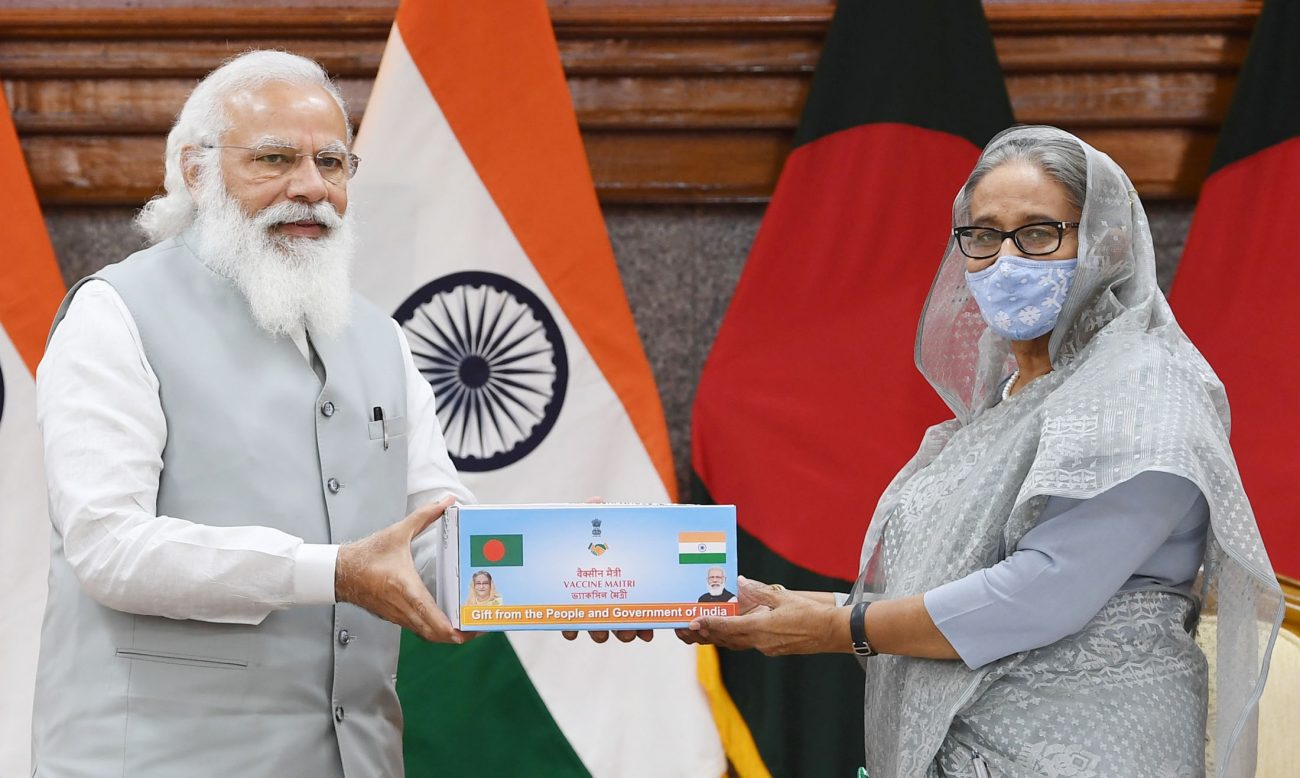OPED By: Anand Kumar, Ph.D.
India and Bangladesh share 54 rivers, making water-sharing a critical and complex issue, as both countries rely heavily on these waters. The complexity is enhanced by the fact that water is a state subject in India, meaning states (provinces) through which these rivers flow are key stakeholders.
Although the central government handles foreign policy and international rivers, it must consider the interests of these states, which can be affected by international treaties. As India and Bangladesh aim for a shared vision of the future, finding a solution to these water-sharing issues becomes imperative.
Despite sharing 54 rivers, India and Bangladesh have only reached water-sharing agreements for the Ganges and Kushiara rivers. The 1996 Ganges Water Sharing Treaty, also known as the Farakka Agreement, regulates the water sharing of the Ganges River between the two countries and is set to expire in 2026.
This treaty has been crucial in managing the water flow between India and Bangladesh through the Farakka Barrage, affecting both upper-riparian India and lower-riparian Bangladesh.
The Farakka Barrage has become contentious, with states like West Bengal and Bihar blaming it for erosion, siltation, and floods in their regions. These concerns have influenced their stance on the treaty renewal. While both India and Bangladesh wish to renew the treaty and a technical committee is examining the issue, opposition from Mamata Banerjee remains strong.
Bihar has also opposed the Farakka Barrage in the past, citing siltation and erosion. Bihar’s Chief Minister, Nitish Kumar, argues that the harms caused by the Farakka Barrage now outweigh its benefits.
While these states’ concerns may have merit, disturbing the Ganges Treaty could exacerbate water-sharing tensions between India and Bangladesh. Issues of siltation and erosion might be better addressed through river dredging.
Among the shared rivers, the Teesta River garners the most attention. However, an agreement on its water sharing has been elusive due to its importance to both countries.
In India, the Teesta flows through Sikkim and West Bengal. Sikkim has seen the development of hydroelectric projects, while West Bengal has implemented new irrigation projects. These developments have changed water consumption patterns.
For West Bengal, the Teesta is crucial for irrigation, while Bangladesh relies on it for irrigation in its northern part, a key food production area. Bangladesh claims that most of the 111,000 hectares of irrigable land in the Teesta basin cannot be cultivated during the dry season.
Securing West Bengal’s cooperation regarding the Teesta River remains challenging. An interim agreement was nearly signed in 2011 during Manmohan Singh’s visit to Bangladesh, but Mamata Banerjee withdrew from the delegation at the last moment. Since then, her stance on the issue has only hardened.
Meanwhile, Bangladesh has attempted to break the deadlock over Teesta water sharing by involving China. In July 2020, the Ministry of Water Resources of Bangladesh requested a $983 million loan from China to implement a project on the Teesta River, as stated in a letter to Bangladesh’s Economic Relations Division.
The Bangladesh government will cover 15% of the total project cost, approximately $130 million. The project includes dredging the river for navigability, constructing strong embankments, developing townships and industries on both sides of the river, and creating a water reservoir and irrigation systems.
This project, known as the Teesta River Comprehensive Management and Restoration Project (TRCMRP), has faced criticism from Bangladeshi environmentalists. A demonstration by a Chinese company revealed that the project involves reducing the river’s width and increasing its depth through dredging, and building embankments on both sides.

The project also plans to recover 170 square kilometers of land on both sides of the river using dredged soil and construct housing and industrial parks on that reclaimed land.
Currently, the maximum width of the Teesta River is 5.1 kilometers, with an average width of 3.1 kilometers. Under the TRCMRP, this width will be reduced to between 0.7 and 1 kilometer, which could severely impact the river’s velocity and water-carrying capacity.
India has expressed concerns about the Teesta River project due to its implementation by Chinese entities. Large-scale projects awarded to China are typically executed by state-run firms, raising fears that critical information, such as water flow data, could be accessed by the Chinese side.
Additionally, the project’s location in Bangladesh would enable Chinese personnel to establish a presence near the Siliguri Corridor, or the “chicken’s neck” – the narrow strip of land that connects the rest of India with its strategic northeastern region.
To address these concerns, India has shown interest in implementing its own project on the Teesta. An agreement in this regard was reached during Sheikh Hasina’s recent visit to Delhi.
A technical team will study the project. Sheikh Hasina expressed a preference for India to implement the project, given that the Teesta flows from India into Bangladesh. She also stated that if Bangladesh is to receive water from the Teesta, then India should be responsible for implementing the project.
This marks a shift from water sharing to water conservation and management of the Teesta River within Bangladesh. Plans to build reservoirs in Bangladesh to manage Teesta water have been made, with India committing to send a technical team to assist in this effort.
The new focus will be on water flow management rather than water sharing. However, the Ministry of Foreign Affairs (MOFA) Bangladesh has also stated that it seeks an early conclusion to a water-sharing deal on the Teesta.
It seems that both sides now clearly recognize the difficulty of achieving a water-sharing agreement on the Teesta in the near future. However, to improve Bangladesh’s situation and work towards a shared destiny, both sides have decided to implement the Teesta project.
This could be a good interim arrangement, as the earlier planned interim agreement on the Teesta could not be signed. While water-sharing between India and Bangladesh is fraught with challenges, addressing these issues with sensitivity to state interests and exploring technical solutions like dredging and building reservoirs could pave the way for more sustainable and cooperative management of shared water resources.
Anand Kumar, Ph.D.
Associate Fellow
Manohar Parrikar Institute for Defence Studies and Analyses (MP-IDSA)




